Protection of cow is a dharma that can be performed by people of all communities in the world. It is a dharma that can be carried out by people of all the four varnas and other communities. In addition to our Hindus, Buddhists and Jainas too have been engaged in rearing and protecting the cow.
All animals other than the cow feed their milk to their young ones and protect them; that too for a short time. But in the case of the cow, she gives her milk to anyone and protects him till the end of her life.
With such considerations in view, it is said in Sastras that the cow should be protected at all costs. In all Vedic rituals it is the practice to say “गोब्राह्मणेभ्यः शुभमस्तु नित्यम् “ – “Gobrahmanebhyah Subhamastu Nityam”- “May cows and brahmanas be always happy”. Here the cow is mentioned first. If the cow is comfortable, the entire world will be happy. It is because all people gain comfort from the cow, worship of cow has been accorded importance. It is to be noted that the cow has abundance of milk such that after satisfying the need of her calf, she is able to feed other people with milk. No other animal has this trait.
[wp_ad_camp_1]
When Jainas (Samanas) rose against Vedic religion and troubled people in a big way in Madurai, the minister Kulachiraiyar and queen Mangaiyarkkarasiyar of the Pandyan king prayed to Sri Tirugnanasambandhamurthy Swamigal to rescue the Vedic religion.
Huge philosophical debates ensued between Sri Tirugnanasambandhamurthy and the Jainas; the latter were defeated in argument. Then both parties vowed to write down on separate palm leaves that their religion alone was true and to float the palm leaves in the river Vaigai.
It was agreed that whichever leaf swims against the river current conveys the true religion. Sri Tirugnanasambandhar wrote the ‘Vazhthu Padigam’ (Song of Benediction) on his palm leaf; this song had as its first line ‘Vaazhga Andanar Vaanavar Aan inam’. His palm leaf swam against the water current for ten miles and reached the shore at a place called ‘Tiruvedagam’. The deity there is known as ‘Patrika Parameswara’; Patrika is leaf and as the leaf was washed ashore at that place, the Lord got that name. The script in the palm leaf says ‘Aaninam vaazhga’- ‘May the breed of cows live long’. As the cow has such distinction, it is necessary for everyone to worship her.
Though all communities follow dharmas in general, there is a special dharma enjoined on each community. As regards the dharmas to be performed by Vaisyas, Bhagavan Sri Krishna has mentioned them in a verse in Bhagavad Gita – “कृषिगौरक्ष्यवाणिज्यं वैश्यकर्म स्वभावजम्“- “Krishi Gourakshyavaanijyam vaisyakarma svabhavajam”. Bhagavan has prescribed three activities for Vaisyas.
The first one, ‘Krishi’ means agriculture, ploughing the field and raising crops for people’s consumption. The second is protection of cow. The third is trade and commerce and helping people through them. This would mean that Vaisya’s duty is to increase agricultural output and help living beings through that.
Vaisya should also take care of the cow with such nutrition that her milk is not only adequate for her calf, but is also available for the public. Similarly, another important duty of Vaisyas is engaging in trade, viz. to fetch articles like wheat, asafetida etc. from long distances, store them and help people by selling those articles to them. If a person has lakhs of rupees, but lives in a desert devoid of foodgrains, he cannot sustain himself just with his money. Similarly in a place where paddy is grown in plenty, one cannot live with just paddy alone without other articles. Hence trade consists in gathering articles from different places and selling them at a particular point useful to the public.
This is an important dharma for Vaisyas. They should not think that trading is sinful. If a brahmana leaves the mundane world and lives in a forest as a Sanyasi and then starts earning money, it is a sin. We should not think that traders engage in trade just for making profit. When there is hartal for a week and shops remain closed, people suffer very much without getting the necessary articles.
Hence trade is meant for common good and not for individual profit. Vaisyas should not conduct trade with profit in view, but with the thought that they are doing a duty ordained by Bhagavan and with prayerful attitude. I spoke on Go Puja today because tomorrow is the day of Go Puja and many Vaisyas are assembled here.
We should all perform dharma as instructed by Bhagavan Sri Krishna. People should also purchase articles from Asthika traders and not atheists. If you buy from atheists, the profit would be used for wrong purposes. Trading has been ordained as a special duty for Vaisyas. Hence Vaisyas should engage in the three activities ordained by Bhagavan, viz. agriculture, cow protection and trade, with devotion to Iswara and be the recipients of His Grace.
(Discourse delivered by Jagadguru Sri Chandrasekharendra Saraswathi Sankaracharya Swamigal of Kanchi Kamakoti Peetham in Sri Ekamreswara Temple Street in Gujaratipet, Chennai.)

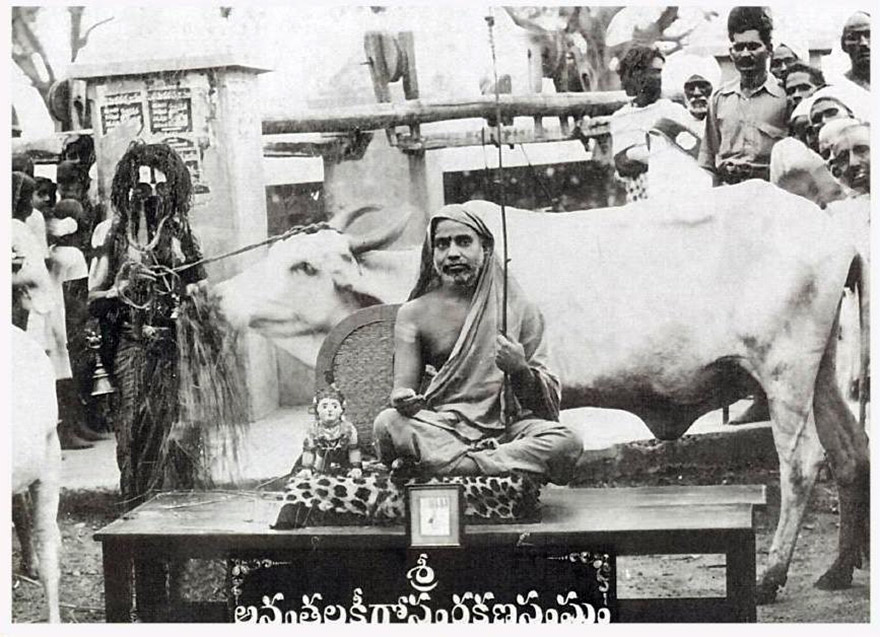
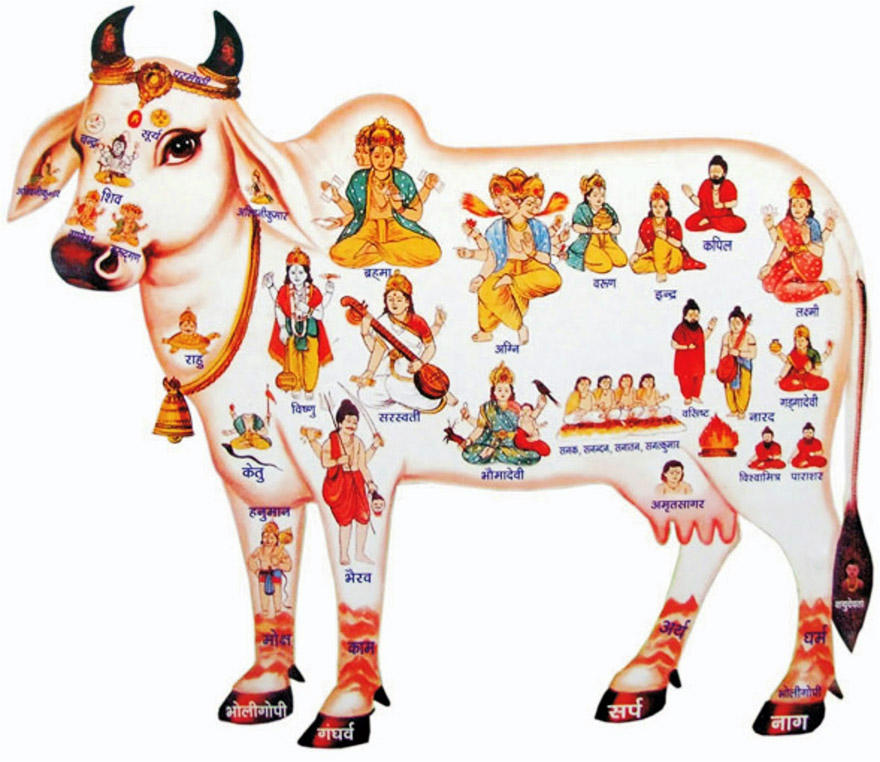
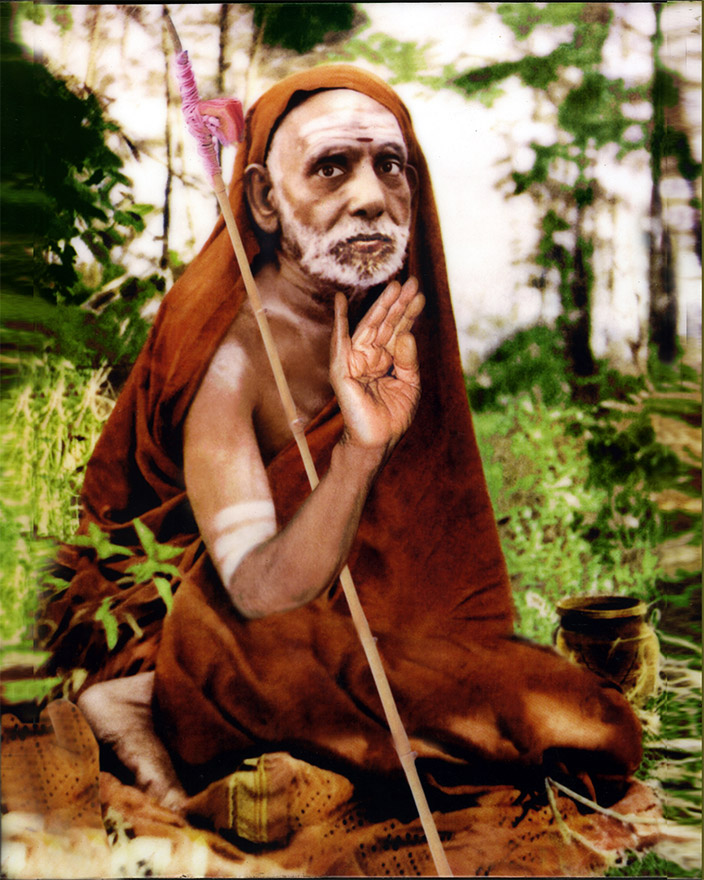
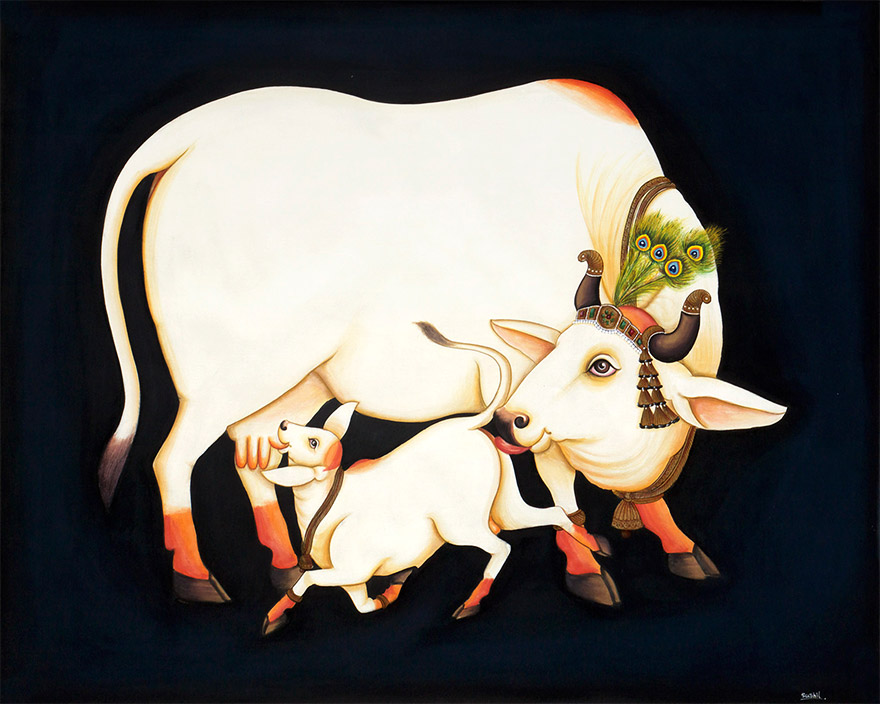
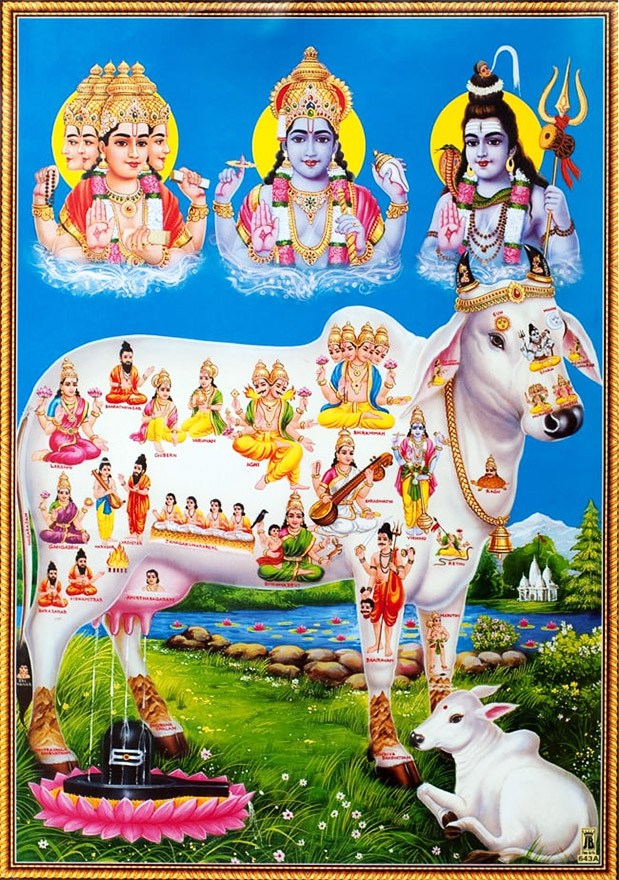

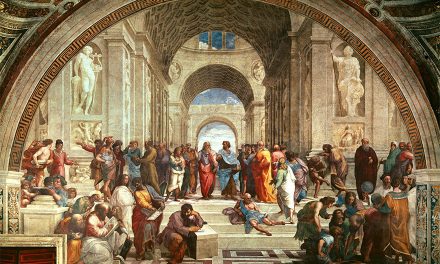










Kanchi Paramacharya did speak extensively on the need to protect the cow. As a traditional Dharmacharya, he relied on the Sastra as authority. This is enough for orthodox people who believe the Sastra. But how is it going to cut ice with those who are not orthodox, and who are not Hindus and hence don’t believe in the Sastra? It is actually seen that there is more Cow slaughter in Tamil Nadu now than 50 years ago! Cows are smuggled to Kerala via/from Tamil Nad.
Cow and Bull are animals absolutely essential for our agriculture. Modern agriculture, heavily depending on chemicals and hybrid seeds, has increased the cost of inputs, destroyed the natural fertility of the soil, has polluted surface and underground water, made the pests resistant to the chemicals, and pose heath hazards to both the farmers and the consumers. The farmers are finding that the yields are subject to diminishing returns. Unable to recover the cost of operations due to the increasing input costs, and vagaries of weather, thousands of farmers are committing suicide.
The only alternative is for the farmer to turn to our native, natural systems of agriculture. For this, the cow and the bull are indispensable. The 5 products from the cow: dung, urine, milk, curd and ghee are all useful. While milk, curd and ghee serve as excellent food for all age groups, the dung and urine are excellent natural fertilizers, pesticides and nourishers of the plant life. This has been shown in numerous studies and proven in fact on the farms. The cow and the bull ( the desi varieties) do not need exotic feed. The native bull is also a beast of burden. Hence, the protection of the cow is an economic necessity today, and a scientific requirement, not mere sastric injunction.
Incidentally, the Americans have felt that the horse is useful to humanity in many ways and it is not proper to eat horse flesh. So they have banned the slaughter of horses. The last slaughter house in the States was closed in 2007. At least after seeing this, should not Indians get some sense into their heads in respect of the cow, which is more useful to us even now, than the horse ever was to the Americans?
today, cow protection is to be justified purely on economic and scientific grounds.
I think if Gorakshana Sanghams mobilize funds and themselves go and buy up old and decrepit cows and cattle from farmers, and then maintain good and decent Gosalas, the problem can be solved to a great extent.
Thanks for this very enlightening post. Please restart your posts on healthy and wellbeing.
With due respect to Kanchi Paramacharya I would request him to read “Rig Veda”. Whence he will find a ‘richa’ or a couplet which clearly says that there is nothing wrong in obtaining/ eating beef, BUT with one proviso; one MUST NOT slaughter a pregnant cow. Which sounds logical.
I do not seem to remember reading the verse in Bhagavad Gita – “कृषिगौरक्ष्यवाणिज्यं वैश्यकर्म स्वभावजम्“-May be I am not inclined to participate in this political mambo jambo of ignorance.
Choice of diet is as much an individual trait as the circumstances permit. We must leave it as that.
Much has been made about “Gau Mata”. Have we forgotten about “Dharti Mata”? Suffix Mata is purely indicative of our address to those entity which bless us with nurture and sustain us. Let us not make a bitter and unpleasant issue of it.Let us learn to accept others whims and fancies too…
Periyava’s vaaku is supreme and I am a firm believer in his words.
He has also encouraged the questioning of assertions, to develop a scientific temper.
In that spirit, I am asking, why only Cow ? How do we justify Go Samrakshanam to others who dont believe in the specific exalted status of the cow . Yes, Shastras are there . But aside from it, I struggle to find a more solid basis due to my ignorance.
Please shed light.
Namasther
We cannot look at cows and beef eating in today’s context. That’s why people in some states are thinking that eating beef is nothing wrong. Such thinking is the outcome of opening ourselves to rotten cultures from outside of India. I think mistake lies on Hindu faith because or people were not educated on what cows are important to our faith , culture and what it has contributed to our lives all this years. Are we going to deny that cows were the only creature we never have to domesticate , it helped us in our fields , in moving things , provided us with milk, yogurt and ghee. Where they got the idea that it is a food source ? For a muslim today, they blindly think that eating cow is natural to Muslims. How ? There were no cows roaming in the deserts of Arabia. Thus the defense that it is Islamic right , itself is flawed. When Arabs see cows as food source , I am not surprised because they don’t have agriculture. They don’t take milk , ghee and yogurt as us. White man was living as barbarians when we has advance civilization. We went down because of Muslim invasion which destroyed the country and polluted with all this unwanted culture. that’s why we Indians must understand that conversion to this alien faiths will destroy everything the Bharat Desh stood for. So Hindus must unite and stop this nasty culture of slaughtering cows. If pork can be banned in 57 Muslim countries and they demand Sharia law for themselves everywhere , why not a Hindu nation ? Hindus must start thinking little selfish for once !
There is no way, we can turn a non believer into a believer, It is just by grace of God that a thought comes to an individual to do some good for the society, country, earth and this cosmos. Its the state of the individual, his karmas, his actions that makes the grace flow to him. In short just keep doing you duty, do what you feel right. For me its cow protection…. for all the reasons mentioned above and more…… Be a nice human being, never harm anyone, take care of the cows ( symbolic of God) and God will take care of you! God Bless All.
exelleant
//Hence, the protection of the cow is an economic necessity today, and a scientific requirement, not mere sastric injunction.//
For a Dharma Acharya, sastras are supreme and coming from the sankara parampara, sruti pramanam reigns supreme. It is from this standpoint and firm conviction in the sastric injunction that the Acharya is trying to make sense. While this article itself is very limited as you have rightly noted the extensive contributions of the Acharya on cow protection, the message is not an isolated one but a continuation or extension of various other talks. Just like a scientist bases his arguments in science, an economist in economic theories, the Acharya bases himself in sastrAs. So it’s not “mere” sastric injunction but the most important, for science and economics do not venture into explaining Dharma, sastra alone does.:)
//In that spirit, I am asking, why only Cow ? How do we justify Go Samrakshanam to others who dont believe in the specific exalted status of the cow .//
Protection of anything sentient is sacred and responsible use of the insentient our duty. The “only” in this context should be taken as an emphasis, not an absolute. In fact, I was having a discussion with my cab driver yesterday as he was opposed to this whole “Anti-Beef” movement. He had the same question for me and my answer to him was purely from the vaidika standpoint. I told him that any sentient being which tries protecting itself when it feels threatened needs protection, care and compassion. The very nature(manifestation of isvara) provides for such a response from the threatened. I also mentioned that if making a strong case for just one species(Cow) alone can create an environment of ruckus and rebellion, my point makes a strong case for vegetarianism against NV which has the potential of shaking up the whole nation. So with compassion as the basis, every species is significant but in addition to compassion, from an utility standpoint, the cow hardly has an equivalent.:)
Cows form the truly nearest approximation to Ishwara and Sakthi – both attribute-wise and functionally too.
They form the very basis of Vedic religion. It is no coincidence that slaughter and mistreatment meted out to them reflect in all aspects of society – such as health, law and order, crimes, debt and disease. It is no point calling oneself a devout Hindu reciting mantras but having an anti cow protection or indifferent stance in this matter.
It is indeed deserving to be our national animal than the tiger!
Just as the Sun in the sky is revered as ‘prathyaksha devata’ (Visible God) -among the animals, Cows are our nearest approximation to Ishwara and Sakthi – both attribute-wise and functionally too. They form the underlying basis of Vedic religion and a healthy ecological system. It is no coincidence that mass slaughter and mistreatments meted out to them reflect soon outwards in all other aspects of society – such as health, law and order, crimes, debt and disease. It is no use calling ourselves devout Hindus reciting mantras but having an anti-cow protection or indifferent stance in this matter. Cows are infact more deserving to be our national animal than a tiger!
Cow should be declared our national animal – then all protection from the various acts of laws and from the constitutional rights can be immediately applied to save the cows from being degraded down to commercial animals from the pedestal of a sacred symbol.